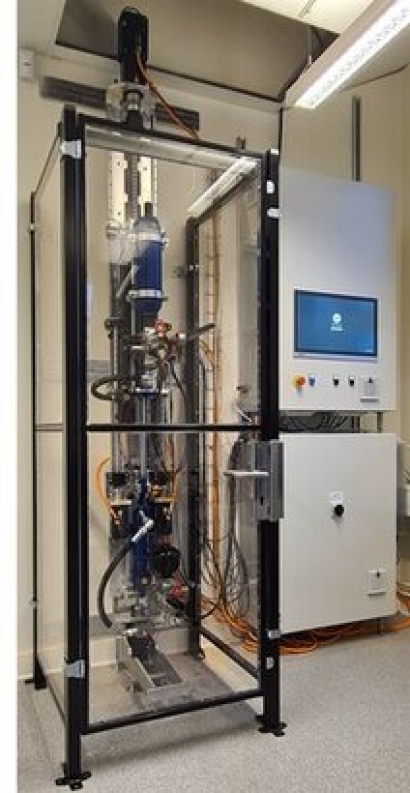
To obtain a realistic load on the machinery, a scaled hydrodynamic model of a full-size wave energy converter (WEC) was used in combination with the physical PTO prototype and a real-time control system in a hardware-in-the-loop (HIL) configuration. A control system has been developed for both the PTO and the HIL rig, which in combination with the physical representation of the PTO, with all essential functionality included, demonstrates that the technology works as intended.
The project validated that all critical parts of the PTO could be built with standard components. The full-scale design aims to use standard components with high availability from suppliers, to minimise risks, shorten development time and reduce the costs of the final product.
The control system developed for the project is based on a modern software architecture using OOP (object-oriented programming) and TDD (test-driven development). It is based on Beckhoff PLCs and TwinCAT software, which is a suitable and cost-effective solution both for HIL testing and for large-scale offshore deployment of wave energy converters in wave farms. The developed software will be transferred to and further developed in the full-scale development phases of InfinityWEC.
The test rig will have continued use as a development platform to evaluate advanced reactive control strategies and design principles, to further refine InfinityWEC’s capability to extract maximum power from every individual wave.
The next development stage for Ocean Harvesting is a sea trial of InfinityWEC at scale 1:3, a project planned to start in November 2022. The sea trial will demonstrate the InfinityWEC technology, control system and its performance in a real sea environment, a critical step towards the validation stage of the system at full scale and commercialisation of the technology.
For additional information:

